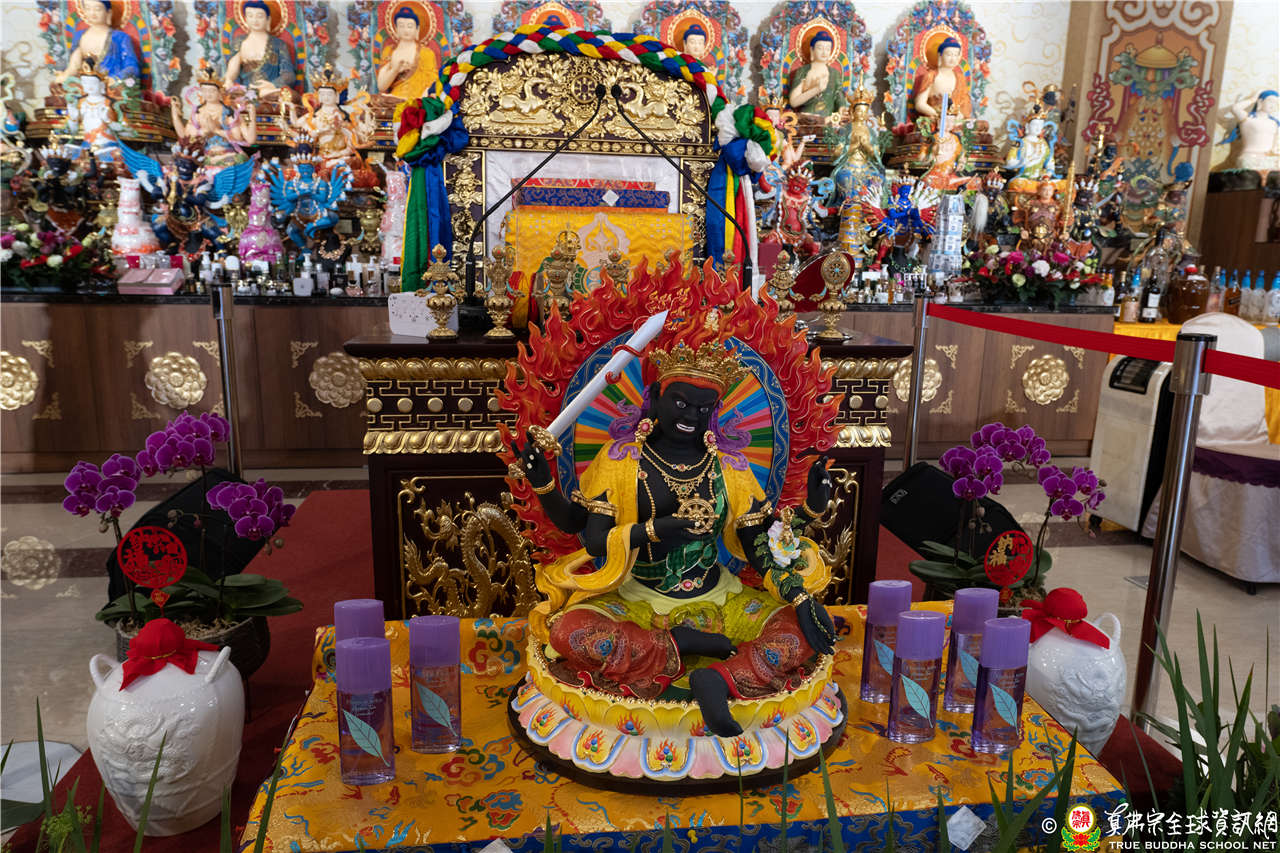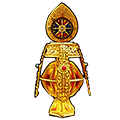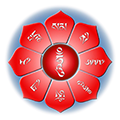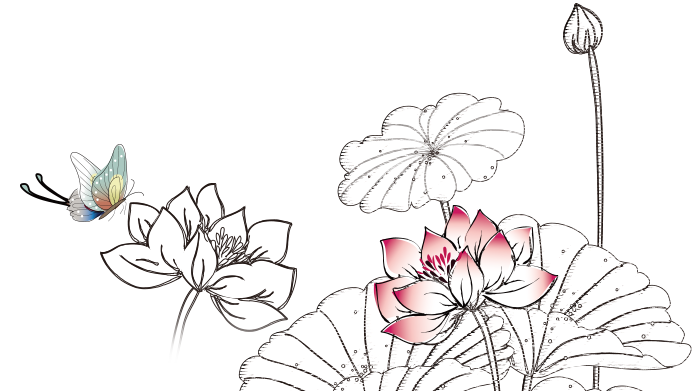
Living Buddha Lian-sheng Sheng-yen Lu Discourse on Adversaries-Crushing Tara at Dayi Temple on Jan. 29, 2023
(This translation only includes content pertaining to the debut transmission of Adversaries-Crushing Tara)
Each time I come to Dayi Temple, I conduct a Green Tara ceremony. Today I, Grandmaster, saw buddhas and bodhisattvas just like those I saw during yesterday afternoon’s Red Manohara Vasudhara Ceremony at Taiwan Lei Tsang Temple. Actually, Red Manohara Vasudhara is also a Tara. At that time, the sky was full of Taras. Some people took pictures, and their photos captured the prajna lights of the Taras. The Taras that came today are White Tara, Green Tara, 21 Taras, and the principal Tara, Adversaries-Crushing Tara. In addition, there are Five-color Taras (or Taras in five colors), Machig Labdron, and Wrathful Black Tara. Here today from Berlin, Germany, there is an emanation of Wrathful Black Tara. Her entire body is black. [The emanation stands up.] Thank you, sit down. Moreover, there are Kurukulla Buddha Mother Vajravarahi, Simhamukha, and Vajrayogini, who are also Taras, as is Machig Labdron.
Padmasambhava has five Taras. These five famous Taras are: Great Taras of Yeshe Tsogyal, Mandarava, Kalasiddhi, Sakya Devi, and Tashi Kyedren. In addition to these Great Taras, Padmasambhava has 20 Taras and another 20,000 Taras.
There are also Sarasvati Tara and Mahashri, who is the Tara of the 12 Shri Devis. Luojia, Kali, and Golden Mother of the Jade Pond are also Taras. Golden Mother especially, a revered deity who delivers all sentient beings, is a Great Tara. Furthermore, there are Golden Mother’s daughters: Hualin Tara, Meilan Tara, Yaoji Tara, and Yuzhi Tara. By Golden Mother’s side are Dong Shuangcheng Tara and Xu Feiqiong Tara. Moreover, there are 3,000 goddess Taras which are the 3,000 Taras of Golden Mother of the Jade Pond.
The pure land of the Taras is called Aoming Heaven. So many Taras! There are 100,000 Taras altogether. During the first dissemination of Buddhism, the patriarch of Tibetan Buddhism, the great Padmasambhava, was actually an accomplished practitioner of Lion-faced Dakini, which means he was an adept of Tara practices. During the second dissemination of Buddhism, Venerable Atisha traveled from India to Ceylon to Sri Lanka. He then traveled by boat from Sri Lanka to Sumatra, Indonesia, where he found Dharmakirti at Jambi and learned Buddhadharma from him. In Indonesia, there is a city called Yogyakarta. Taras were found there. Are there any disciples here from Yogyakarta? Dharma Sister Zhuang from Yogyakarta may be sitting outside. I noticed that she is from Yogyakarta, Indonesia. In Yogyakarta, there are many Green Taras.
Venerable Atisha, who attained fruition in Green Tara Practice, invited Green Tara back to Tibet with him. In what practice did Grandmaster attain fruition? I attained fruition in the practice of the Great Tara Golden Mother of the Jade Pond. The patriarch Padmasambhava attained accomplishment in Simhamukha Practice. Venerable Atisha, patriarch of the second dissemination of Buddhism, was an adept of Green Tara Practice. Grandmaster cultivated and attained accomplishment in the Practice of Golden Mother of the Jade Pond, a Great Tara. Many people cultivate Tara practices because Tara’s loving kindness, compassion, joy, and equanimity enables them to respond to sentient beings and save them. Avalokitesvara usually appears as a female. We can therefore say Avalokitesvara is also a Great Tara. Mahasthamaprapta Bodhisattva is Great Strength Bodhisattva, Great Vigorous Bodhisattva, and a Great Tara.
Avalokitesvara (Guanyin) is worshiped in every home, and that is especially true in Taiwan. From earliest times, the Taiwanese people have prayed to Guanyin, who is actually a Great Tara. In Vajrayana Buddhism, there are many Taras, including all the goddesses and a great many bodhisattvas as well.
When I came to Dayi Temple, the only practice I taught was “Green Tara, 21 Taras”. As a result, Dayi Temple will be able to save a great many sentient beings. We can simply say: Dayi Temple is the palace of Taras. How many Taras have I transmitted at Dayi Temple? This is really something. Who is currently in charge of the temple? You are still trying to find someone? What I mean is, who is currently in charge? Dharma Instructor Lianda is the head [主] of the family. What about Dharma Sister Liao? She is the head of the family “without a dot” - the King [王] of the Family. Dharma Instructor Lianda therefore still needs to listen to Dharma Sister Liao. So currently, the abbot is still Tara. As you can see, Dharma Sister Liao stood up, not Dharma Instructor Lianda.
Sometimes, what Grandmaster says cannot proceed 100% because Shimu’s input is still required. As long as I don't let Shimu hear about it, I can go ahead and decide by myself. But if she hears about it, she will call the shots. She says, “Grandmaster calls the big shots whereas the small shots are called by me.” Now, after 50 years, there are still no “big shots”. Everything is decided by Shimu. Tara delivers countless sentient beings.
So today, you will all capture the lights of many Taras in your photos, just like yesterday, when all the Taras were present at Taiwan Lei Tsang Temple for the Red Manohara Vasudhara Homa Ceremony. The lights, all the lights, were Taras’ lights. Today is the same. The lights of the Taras are all appearing. In addition, many unusual lights, such as orbs of flying saucer-shaped lights, have been photographed. Why are these lights called "prajna” lights? Because there is a mandala inside the light. Within each mandala is a principal deity. Surrounding the principal deity are many Taras.
Patriarchs of Tibetan Buddhism with mild features are known as peaceful deities, and with furious features, wrathful deities. Inside each prajna light is a peaceful deity. There is another category called the neither peaceful nor wrathful deities. These deities have a gentle smile and anger on their faces, resembling the look in the Mona Lisa Smile painting displayed in the Louvre Museum. When you come home late, smiling gently but also with anger in your heart, that is called neither peaceful nor wrathful. In Tibetan Buddhism, these are the three forms of deities. Kurukulla, for example, a deity of love and respect, is smiling and wrathful.
To invoke Adversaries-Crushing Tara, we first visualize her seed syllable 「」 "du" appears on a moon disc on a red lotus. The seed syllable "du" is a 5 with a hook symbol below it. In other words, adding a hook to the bottom of numeric 5 of 1, 2, 3, 4, 5 forms the "du" syllable. The "du" syllable transforms into a black Tara. Wearing a yellow cassock, she looks wrathful, her hair is standing upwards, and her eyes are staring. She is depicted as wrathful, even her teeth.
I have seen the animation of this. Can you quickly show the image of the wrathful Tara? The animation is now playing, (the animation video of the Adversaries-Crushing Tara is played to the audience). Take a look at the eyes and legs of this wrathful black Tara. Ratnasambhava Buddha is on her crown. A vajra scepter is on the lotus and she forms the Wrathful Mudra. Her other hands are holding a sword and a dharma wheel respectively. The animation of this deity looks so vivid that it is even clearer than my description. Her mantra is “Om, da-la, du-da-la, du-la, so-ha, hum, hum, pei”. By adding ''hum, hum, pei'', it becomes the mantra of the wrathful Tara. “Om, da-la, du-da-la, du-la, so-ha, hum, hum, pei.”
Translated by TBTTs
Translator: Angeline Oh
Editors: Henry Wolf and DJ Chang




